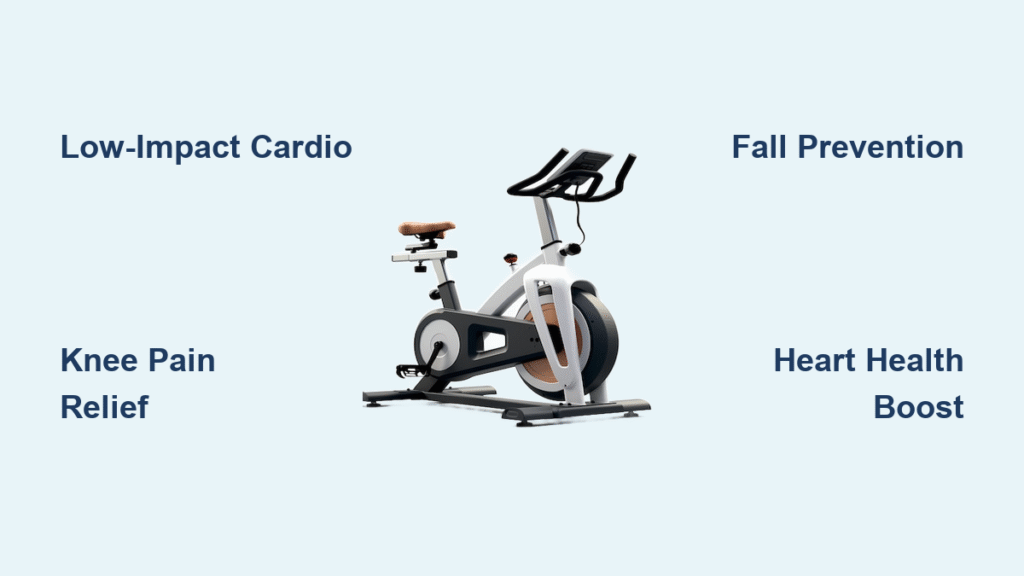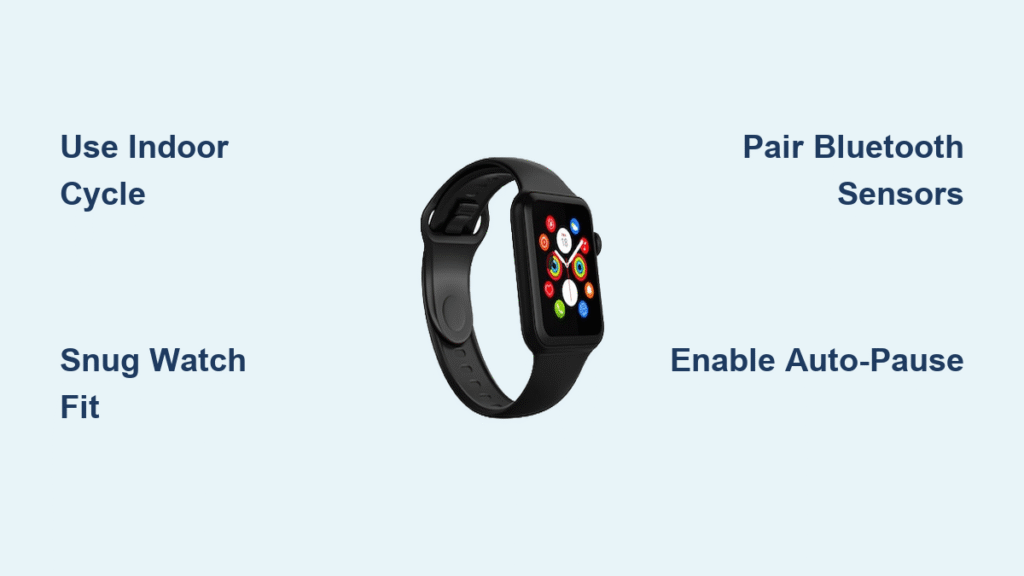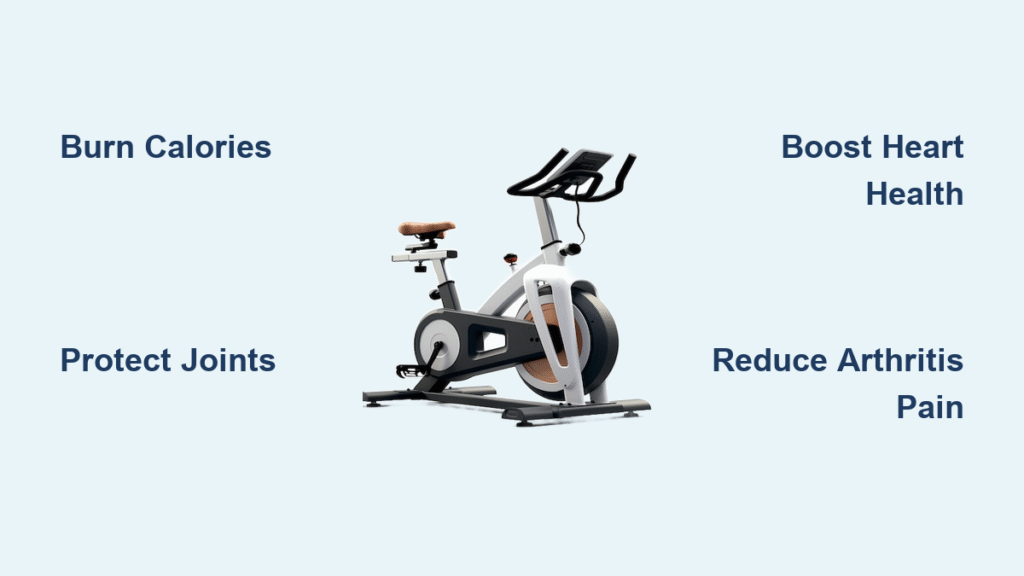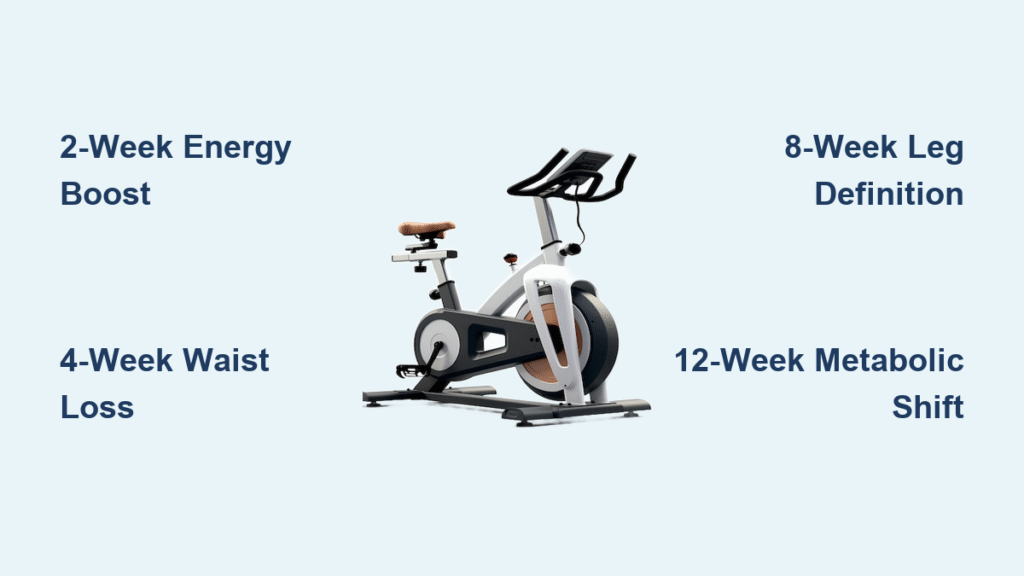Joint pain, balance concerns, and fear of falling prevent countless seniors from getting the movement their bodies desperately need. Skipping daily activity accelerates muscle loss, weakens bones, and increases isolation—but pounding pavement or navigating uneven sidewalks isn’t the only solution. An exercise bike delivers unmatched benefits of exercise bike for seniors by building heart strength, leg power, and mental resilience without joint strain or fall risks. You’ll discover exactly how 10 minutes of pedaling protects your independence, which bike style matches your body’s needs, and how to start safely today—even if you haven’t exercised in years.
Unlike high-impact activities, stationary cycling provides a weather-proof, controlled environment where you control the intensity. Medical studies confirm it’s the #1 recommended cardio tool for seniors with arthritis, heart conditions, or mobility limitations. Within weeks of consistent use, you’ll notice easier stair climbing, steadier balance, and renewed energy for daily life. Let’s break down the science-backed advantages that make this simple machine a lifeline for aging well.
How 10 Minutes Daily on a Bike Slashes Senior Blood Pressure Risk
Why Cycling Beats Walking for Heart Health After 65
Walking stresses joints and requires stable balance—risks many seniors can’t afford. Cycling elevates your heart rate gently while seated, improving blood vessel flexibility without jarring impacts. Just three 10-minute sessions daily lower resting blood pressure by coaxing vessels to relax, directly cutting stroke and heart attack risks. This meets the American Heart Association’s 150-minute weekly cardio target without straining knees or ankles. You’ll feel the difference in everyday tasks like carrying groceries or playing with grandkids.
Meet Cardio Guidelines in Short Bursts Without Exhaustion
Stop skipping exercise because you “don’t have time.” A 2021 study proved short cycling bursts work better for seniors than marathon sessions. Pedal at a “somewhat hard” pace (where you can talk but not sing) for 10 minutes after meals. This stabilizes blood sugar, improves circulation, and builds endurance faster than one long workout. Track progress with a simple heart rate monitor—aim for 50-70% of your max (220 minus your age). Within a month, you’ll climb stairs without pausing.
Build Leg Strength to Stand Up Without Grabbing Chairs

Target the Muscles That Keep You Independent
Every pedal stroke fires quadriceps, hamstrings, glutes, and calves—the exact muscles needed to rise from chairs, step into showers, or catch yourself if you stumble. Unlike free weights, cycling engages these muscles continuously with zero joint compression. Key insight: Keep your back straight while pedaling to silently activate core stabilizers. This hidden core work improves posture and prevents back strain during daily movements.
How Cycling Translates to Fewer Falls and Easier Daily Tasks
Stronger legs mean no more white-knuckling stair railings or dreading low couches. A clinical trial showed seniors who cycled 20 minutes daily reduced fall risk by 31% in 12 weeks. Why? Cycling builds the explosive power needed for quick balance corrections. You’ll notice it when stepping off curbs or reaching for high shelves. For best results, add light resistance twice weekly to mimic real-world challenges like pushing a shopping cart.
Relieve Knee Arthritis Pain in Just 12 Weeks (Study-Backed)

The Low-Impact Secret for Osteoarthritis Sufferers
Walking or running pounds arthritic joints with 3-5x body weight per step. Cycling applies near-zero impact—just smooth circular motion that glides knees through their natural range. Critical safety tip: Start with zero resistance if you have flare-ups. A 2021 Clinical Rehabilitation review confirmed stationary cycling reduced knee osteoarthritis pain by 40% in seniors within 3 months. The secret? It strengthens supporting muscles without aggravating inflammation.
Why Cycling Lubricates Joints Better Than Rest
“Resting” stiff joints backfires—it starves them of synovial fluid, nature’s lubricant. Gentle pedaling pumps this fluid through cartilage, reducing stiffness and improving mobility. Unlike rest, cycling actually reverses joint deterioration by nourishing tissues. Aim for 15 minutes daily at a comfortable pace. Within weeks, you’ll bend easier to tie shoes or garden without knee pain.
Stop Bone Loss: How Cycling Protects Your Hips After 65
The Weight-Bearing Benefit You Didn’t Expect
While walking is superior for bone density, cycling still delivers crucial benefits. The push against pedal resistance signals osteoblasts (bone-building cells) to stay active, slowing age-related loss. Don’t skip this: Add 5 lbs of resistance 3x weekly—enough to challenge muscles but not strain joints. This modest load maintains femur strength, your body’s largest bone and most fracture-prone area after 65.
Reduce Hip Fracture Risk by Combining Balance and Bone Strength
Hip fractures often result from weak bones plus poor balance. Cycling tackles both: stronger legs improve stability, while bone-preserving resistance lowers break severity if you do fall. Data shows seniors who cycle regularly have 22% fewer hip fractures. Pair 20 minutes of cycling with 5 minutes of standing balance exercises (like heel-toe walks) for maximum protection.
Burn 300 Calories Safely: Exercise Bike for Senior Diabetes Management
How Cycling Regulates Blood Sugar Without Medication
Muscle contractions during pedaling pull glucose from your blood 50% more efficiently—acting like natural insulin. A Brazilian study found seniors who cycled 45 minutes 3x weekly lowered fasting blood sugar by 18% in 12 weeks. Pro tip: Pedal within 30 minutes after meals to blunt sugar spikes. Track results with a continuous glucose monitor to see real-time improvements.
Your 30-Minute Ride vs. a Sundae: Calorie Comparison
A moderate 30-minute session burns 200-400 calories depending on resistance—equivalent to a full ice cream sundae. But unlike sugar crashes, cycling provides sustained energy by stabilizing insulin sensitivity. For diabetics, this means fewer medication adjustments and fewer emergency room visits. Start with 10-minute rides after breakfast and dinner to build the habit safely.
Lift Depression and Boost Memory: The Senior Brain Benefits
Endorphin Release for Anxiety Relief in 20 Minutes
Steady pedaling triggers endorphins that reduce anxiety and lift mild depression—without medication side effects. Seniors report feeling calmer and more focused after just 15 minutes. Why it works: The rhythmic motion creates a meditative effect, lowering cortisol (the stress hormone). Pair your ride with nature documentaries or favorite music to double the mood boost.
Protect Your Memory with Increased Brain Blood Flow
Cycling pumps 15% more oxygen-rich blood to the hippocampus—the brain’s memory hub often damaged in early dementia. Studies link consistent cycling to 30% slower cognitive decline in seniors. For best results, ride 3x weekly while listening to audiobooks or podcasts to engage neural pathways. You’ll notice sharper recall for names, appointments, and where you left your keys.
Recumbent vs. Upright: Which Bike Fits Your Senior Body?

Why Recumbent Bikes Win for Back Pain and Balance Issues
If you have spinal stenosis, sciatica, or fall anxiety, recumbent bikes are non-negotiable. Their lumbar-supported seat and step-through frame eliminate mounting risks, while a low center of gravity prevents tipping. Must-have features: Adjustable backrest, wide non-slip pedals, and transport wheels. Models like the Exerpeutic 900XL ($200-$300) offer medical-grade stability for under $500.
Upright Bikes: When Space Is Tight but You Still Want Results
With half the footprint of recumbent models, upright bikes fit cramped apartments while burning 10% more calories. They mimic outdoor cycling posture—ideal if you have prior biking experience. Critical adjustment: Raise the handlebars to shoulder height to avoid neck strain. The LEIKE X-Bike ($150-$300) delivers quiet, smooth operation in minimal floor space.
Adjust Your Bike Seat in 60 Seconds for Pain-Free Pedaling
The Heel Test for Perfect Seat Height (Step-by-Step)
- Sit on the bike and place your heel on the pedal at its lowest point (6 o’clock position).
- Straighten your knee fully—if you can’t reach, raise the seat; if your hip rocks, lower it.
- When using the ball of your foot, a slight knee bend (25-35°) should remain.
Warning: Incorrect height causes knee pain or hip strain. Recheck monthly as flexibility improves.
Handlebar Positioning to Avoid Neck and Shoulder Strain
Grip handlebars with elbows slightly bent and shoulders relaxed. On recumbent bikes, adjust armrests so forearms rest parallel to the floor—no shrugging. Upright riders should keep wrists neutral (not bent up/down). Pro fix: If your neck aches, move the seat back slightly to reduce forward lean.
Avoid Injury: The 3 Must-Have Safety Features for Senior Bikes
Stop Pain Before It Starts: The Post-Ride Pain Scale Rule
Track joint pain on a 0-10 scale before and 30 minutes after riding. If pain jumps 2+ points, cut resistance or duration next session. Never “push through” sharp pain—it signals damage. Start with zero resistance for the first week, adding just 5% weekly. This prevents setbacks that derail progress.
Warm-Up and Cool-Down Routines That Prevent Stiffness
- Warm-up: 2 minutes of easy pedaling while swinging legs side-to-side.
- Cool-down: 3 minutes of slow pedaling followed by:
- Quad stretch: Hold ankle for 20 seconds
- Calf stretch: Press heel into floor while seated
- Hamstring stretch: Extend leg and reach toward toes
Skipping these increases next-day soreness by 70%.
Your 4-Week Plan to Pedal 20 Minutes Without Pain

Week 1: Start with 5 Minutes at Zero Resistance
Pedal gently while watching morning news. Focus on smooth circles (not mashing pedals). Do this daily—consistency trumps duration. By day 7, you’ll feel less stiffness rising from chairs.
Track Progress with Heart Rate (Not Just Time)
Use a chest strap or finger monitor to stay in the “somewhat hard” zone (50-70% of max heart rate). Example for 70-year-olds:
– Week 1: 85-119 BPM for 5 minutes
– Week 4: 85-119 BPM for 20 minutes
Always get physician clearance first if you have heart conditions.
How to Stick With It: Senior Cycling Motivation Hacks
Pair Rides with Morning Coffee for Instant Habit Stacking
Place your bike where you brew coffee. Pedal while it brews—5 minutes becomes automatic. This “habit stacking” technique makes cycling as routine as brushing teeth. Within 21 days, your brain craves the endorphin rush.
Join Virtual Senior Cycling Classes for Community Support
Apps like Schwinn JRNY or Peloton offer 15-minute “Silver Sneakers” classes with peers. Live leaderboards and instructor shoutouts (“Great job, Martha!”) boost accountability. Free alternative: YouTube channels like “Senior Cycling Club” provide ad-free 10-minute sessions.
An exercise bike—especially a recumbent model—isn’t just fitness equipment; it’s your passport to independence. By building heart strength, joint resilience, and mental clarity in a fall-proof environment, it lets you age actively rather than reactively. Start with five pain-free minutes today, progress gradually, and within weeks you’ll notice stronger legs stepping off buses, calmer nerves during doctor visits, and brighter moods that ripple through your entire day. Your journey to vibrant longevity begins with one smooth pedal stroke.




